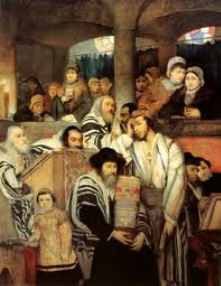Gender and Judaism
Alanna E. Cooper
Boston University, 2012
|
The study of Judaism has long been organized around masculine categories. Yet, these have been generally treated as universal, normative and un-marked. To provide a richer, more expansive and accurate understanding of Judaism, this course considers gender – both the masculine and the feminine – as integral elements of study. Our focus will be on halakha (prescriptive Judaism) as well as on the ways in which Judaism is practiced and lived. We will begin with an introduction to halakha and its gendered dimensions, and will then move into an exploration of four domains of Jewish life: Torah study, prayer, the body and family. The study of “Gender and Judaism” might also be organized along a historical axis (exploring ways in which the role of gender in Judaism has changed over time), or along a geographic axis (comparing the ways in which gender is articulated in Judaism across various locales and cultural contexts). Although, these two analytical approaches do not serve as primary organizing principals here, they will frame several of our discussions. So, throughout the semester emphasis will be largely on gender at it is understood and practiced amongst American Jews today. Yet, we will make forays to some other areas of the globe (including Central Asia, North Africa, Western Europe and Israel) to explore the gendered dimensions of Judaism cross-culturally. In addition, we will occasionally move back in time, to study the ways in which gender categories were understood by Jews who lived in the rabbinic, medieval and early modern periods. |


